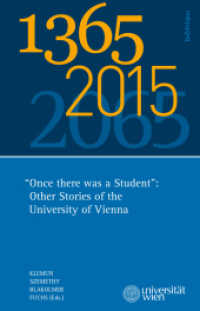- ホーム
- > 洋書
- > ドイツ書
- > Humanities, Arts & Music
- > Arts
- > architecture
Full Description
Spread over a hill that climbs up from the plain, Himeji Castle with its white walls shimmering in the sunlight like the feathers of a fantastic bird seems to be rising into the blue sky like a great heron. This impression has given it the name "Castle of the White Heron". The castle, which has nothing martial about it, on the contrary, it is extraordinarily elegant, is undoubtedly one of Japans most impressive fortresses. It was built between 1601 and 1609, when the period of war was almost over, and was used primarily for administration and residence, with defence as a secondary role. Thus its aesthetic impact was as important when it was built as its actual purpose as a fortification. The main building in the castle is the Tenshu or Tenshu-kaku in the northem part of the complex, a wooden structure about 46 m high. Its complicated intermediate roofs make it look more like a skyscraper than a tower. Himeji Castle represents an architectural type that probably does not occur in other areas of the world. Large parts of the building were classified as "Kokuho State Treasure" as early as 1951, and others as "Important Cultural Property". The building was placed on the World Cultural Heritage list in 1993. Art historian Irmtraud Schaarschmidt-Richter specialized in classical and modern Japanese art and architecture at an early stage, as is shown by numerous publications. Her book on the Japanese garden has long been a standard work. Most recently she was involved in publications on architects Kazuo Shinohara and Toyo Ito. Photographer Mo Nishikawa, a pupil of Ken Domon, one of the most important photographers of our century, sees his work as a spiritual and intellectual contemplation of art. His photographs of the Katsura Palace, the Himeji Castle and the Ise Shrine are among the great masterpieces of contemporary photography.








